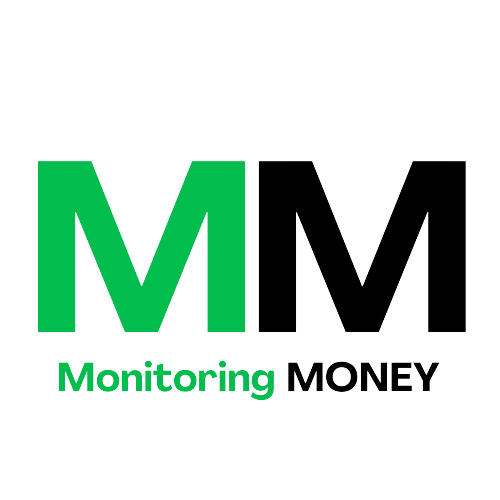Monitoring your money is essential for achieving financial stability and reaching your financial goals. Everyone is different, so how I monitor my money, may be different from how you monitor your money. By keeping track of your income, expenses, savings, and investments, you can make informed decisions, avoid unnecessary debt, and work towards a secure financial future. This guide will walk you through the steps and tools you need to effectively monitor your money.
Set Clear Financial Goals
Setting clear financial goals is the foundation of effective money management. Without goals, it’s challenging to stay motivated and focused on saving, spending, and investing wisely.
Financial goals can be categorized into short-term and long-term objectives.
Short-term goals are typically achieved within a year and might include paying off a credit card debt, building an emergency fund, or saving for a vacation. Long-term goals, on the other hand, are achieved over several years and may include retirement savings, buying a home, or funding a child’s education.
Start by writing down your financial goals and prioritizing them. Use the SMART criteria (Specific, Measurable, Achievable, Relevant, Time-bound) to define your objectives clearly. For instance, instead of setting a vague goal like “save money,” a SMART goal would be “save $5,000 in an emergency fund by the end of the year.” This approach provides a clear target and a timeline, making it easier to stay on track.
Resource: SMART Goals Setting
Track Your Income and Expenses
Tracking your income and expenses is a critical step in understanding where your money goes and how you can manage it better. Start by categorizing your income sources, such as your salary, earnings from side hustles, and any passive income from investments or rental properties. Knowing your total income helps you create a realistic budget and identify opportunities to increase your earnings.
Next, categorize your expenses into fixed and variable costs. Fixed expenses include rent or mortgage payments, utilities, insurance premiums, and other regular bills that remain constant each month. Variable expenses, on the other hand, fluctuate and include groceries, dining out, entertainment, and other discretionary spending. By tracking these expenses, you can identify spending patterns and areas where you can cut back.
Choose a tracking tool that suits your needs and start recording your income and expenses. Review your spending patterns monthly to identify areas where you can save money and make adjustments to your budget as needed.
Useful Tools and Apps
| Tool | Description | Link |
|---|---|---|
| Mint | Budgeting and expense tracking app | Mint |
| YNAB | Personal budgeting and goal-setting | You Need A Budget |
| PocketGuard | Tracks spending and helps save money | PocketGuard |
Create a Budget
Creating a budget is essential for managing your finances effectively. A budget helps you allocate your income towards various expenses, savings, and debt repayment, ensuring that you live within your means and work towards your financial goals. There are different budgeting methods you can use, depending on your preferences and financial situation.

One popular method is zero-based budgeting, where you allocate every dollar of your income to specific expenses, savings, or debt repayment, ensuring that your income minus expenses equals zero. This approach forces you to account for every dollar and helps prevent overspending. Another common method is the 50/30/20 rule, which allocates 50% of your income to needs (such as housing, utilities, and groceries), 30% to wants (like dining out and entertainment), and 20% to savings and debt repayment.
Budget Template
| Expense Category | Estimated Monthly Cost | Actual Monthly Cost | Difference |
|---|---|---|---|
| Rent/Mortgage | $1,200 | $1,200 | $0 |
| Utilities | $200 | $180 | +$20 |
| Groceries | $400 | $420 | -$20 |
| Entertainment | $150 | $130 | +$20 |
| Savings/Investments | $300 | $300 | $0 |
Develop a budget based on your income and expenses, and monitor it regularly. Adjust your budget monthly to reflect any changes in your income or spending habits. This will help you stay on track with your financial goals and ensure that you’re making the most of your money.
Resource: Budgeting 101
Monitor Your Savings and Investments
Monitoring your savings and investments is crucial for building wealth and achieving long-term financial goals. Start by setting up an emergency fund, aiming to save three to six months’ worth of living expenses. This fund will provide a financial cushion in case of unexpected expenses or job loss, giving you peace of mind and financial security.

Once you have an emergency fund in place, consider opening a high-yield savings account to earn more interest on your savings. These accounts typically offer higher interest rates than regular savings accounts, helping your money grow faster.
Investing is another essential aspect of building wealth. Start by learning the basics of stock investments, real estate, and other investment options. Diversify your portfolio to spread risk and increase your chances of earning higher returns. Consider using investment apps and tools to manage your portfolio and track your investments.
Useful Tools and Apps
| Tool | Description | Link |
|---|---|---|
| Personal Capital | Tracks investments and net worth | Personal Capital |
| Robinhood | Commission-free stock and crypto trading | Robinhood |
| Vanguard | Investment management and retirement funds | Vanguard |
Regularly review your savings and investment accounts to ensure they align with your financial goals. Adjust your investment portfolio based on your risk tolerance and financial objectives. Staying informed about market trends and investment opportunities will help you make better decisions and grow your wealth over time.
Review and Adjust Regularly
Regularly reviewing and adjusting your financial plan is essential for staying on track with your goals. Conduct a monthly review to compare your actual spending against your budget. Identify any discrepancies and adjust your budget accordingly to ensure that you’re living within your means and saving enough for your future.

An annual review is also crucial for evaluating your progress toward your financial goals. Assess whether you have achieved your short-term goals and make adjustments to your long-term goals as needed. Consider updating your budget and investment strategies based on changes in your financial situation, such as a salary increase, new financial obligations, or changes in the market.
Action Step: Schedule a monthly and annual financial review to stay on top of your financial health and make necessary adjustments. This practice will help you remain focused on your goals and ensure that you’re making the most of your money.
Resource: How to Review Your Finances
Use Financial Education Resources
Continuous learning is vital for effective money management. There are numerous resources available to help you improve your financial literacy and make informed decisions. Reading books, following blogs, and taking online courses can provide valuable insights and strategies for managing your money.
Recommended Reading
- Books: “Rich Dad Poor Dad” by Robert Kiyosaki, “The Total Money Makeover” by Dave Ramsey. These books offer practical advice and real-life examples of effective money management.
Blogs
- NerdWallet: Offers comprehensive guides and tips on various personal finance topics, including budgeting, investing, and saving.
- The Penny Hoarder: Provides creative ways to save and earn money, with real-life success stories and practical tips.
Courses
- Coursera: Offers financial planning and investment courses from top universities and institutions.
- Udemy: Provides a wide range of personal finance and budgeting courses, catering to different skill levels and financial goals.
Action Step: Invest time in learning about personal finance through books, blogs, and online courses to enhance your financial literacy. Staying informed will empower you to make better financial decisions and achieve your goals.
Resource: Coursera Financial Planning Courses | Udemy Personal Finance Courses
Conclusion
Monitoring your money is a continuous process that involves setting goals, tracking income and expenses, creating and adjusting a budget, managing savings and investments, and regularly reviewing your financial status. By using the right tools and resources, you can gain better control over your finances and work towards achieving your financial goals. Start today by implementing these strategies, and you’ll be well on your way to financial stability and success.

Call to Action: Choose one of the tools or resources mentioned above to begin monitoring your money. Commit to regular financial reviews and stay informed to keep your finances on track.
This comprehensive guide provides a structured approach to monitoring money, integrating useful tools, resources, and actionable steps for readers to follow.




